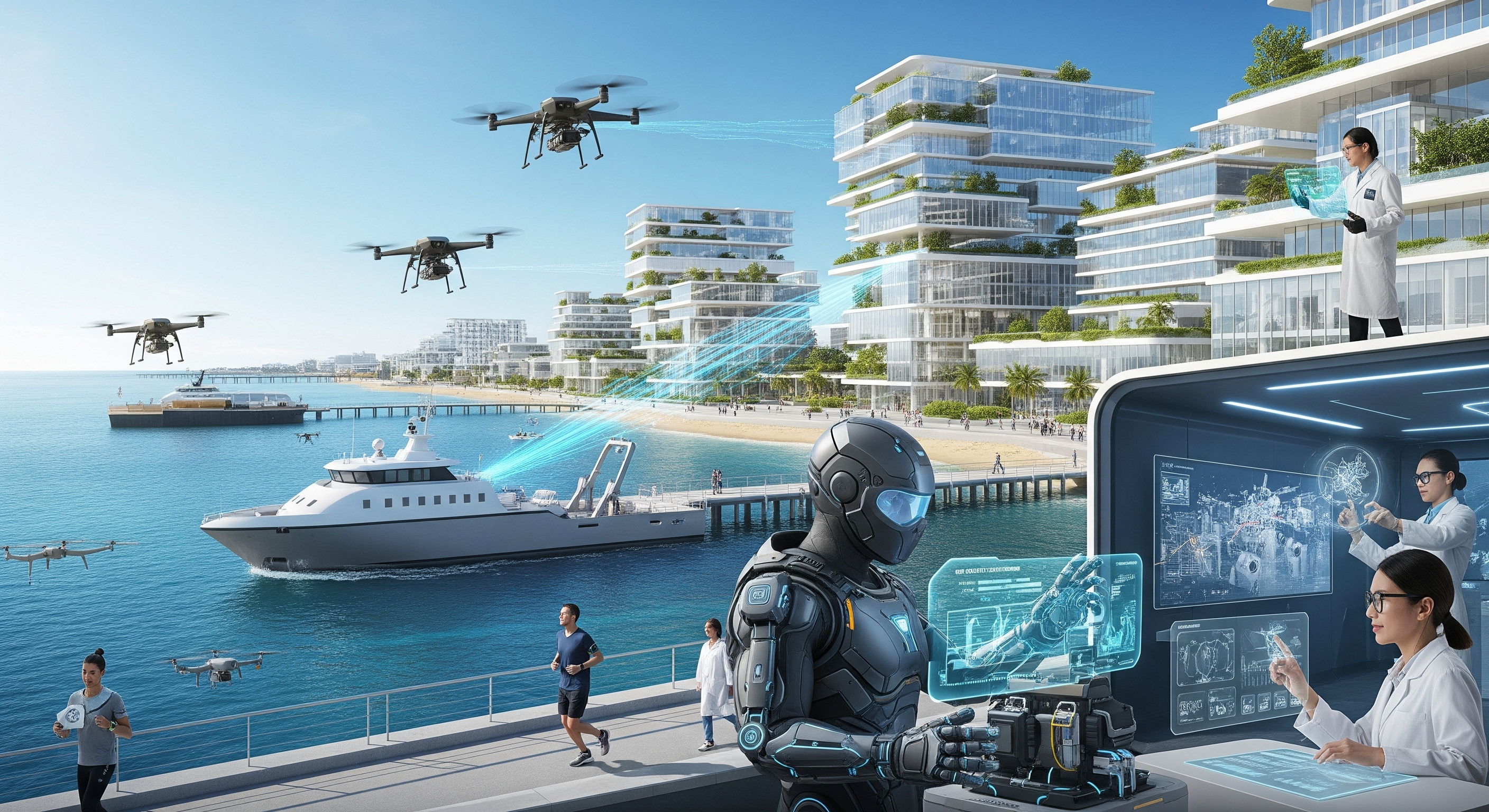The Vision: A Symphony of Intelligent Entities
The next frontier in intelligent systems involves moving beyond isolated applications to a world where multiple autonomous or semi-autonomous agents coexist, collaborate, and interact within a shared environment. This paradigm, known as Multi-Agent Systems (MAS), offers a powerful framework for understanding and designing complex, distributed intelligence.
Imagine an ecosystem where various specialized agents—from autonomous vehicles and robotic assistants to intelligent infrastructure and augmented humans—work in concert, adapting to dynamic conditions and achieving goals that would be impossible for a single entity.
Core Concepts
The Environment (Ε)
The environment, denoted as Ε (Epsilon), is the shared space or context within which agents operate. It can be physical (like a city, a factory floor, or the ocean) or virtual (like a software ecosystem or a market). The environment possesses its own dynamics, can change over time (independently or due to agent actions), and presents both opportunities and challenges for the agents.
The Agents (Αi)
Agents, denoted as Αi (Alpha-i for the i-th agent), are entities capable of perceiving their environment (or parts of it) and acting upon it to achieve their goals. Agents can vary widely in complexity, from simple reactive entities to sophisticated cognitive systems with learning and planning capabilities. Key characteristics of agents include autonomy, pro-activeness, reactiveness, and social ability (interaction with other agents).
Interactions
The richness of MAS lies in the interactions between its components:
- Agent-Agent Interaction: Agents can communicate, coordinate, compete, or collaborate with other agents. This can involve direct messaging, negotiation, or indirect interaction through environmental changes (stigmergy).
- Agent-Environment Interaction: Agents perceive the state of the environment and execute actions that modify it. The environment, in turn, provides feedback and influences agent behavior.
- Environment-Self Interaction: The environment itself can have internal dynamics, evolving independently of agent actions (e.g., weather patterns, resource regeneration).
The Augmented Human as a Unified Agent (Αexo)
In this framework, a human augmented with advanced technology, such as an exoskeleton or sophisticated wearable sensors and interfaces, is considered a single, unified agent (Αexo). The technology becomes an integral part of the agent's perceptual and actuating capabilities, enhancing their ability to interact with the environment and other agents. The focus is on the combined human-technology entity as a cohesive decision-making and action-performing unit.
Visualizing the Ecosystem: A Unified Scene
To bring this complex interplay to life, the following prompt is designed for an AI image generation tool. It aims to capture a holistic scene where multiple advanced technological concepts, each representing a specialized agent or an aspect of the intelligent environment, coexist and interact within a plausible, near-future setting.

